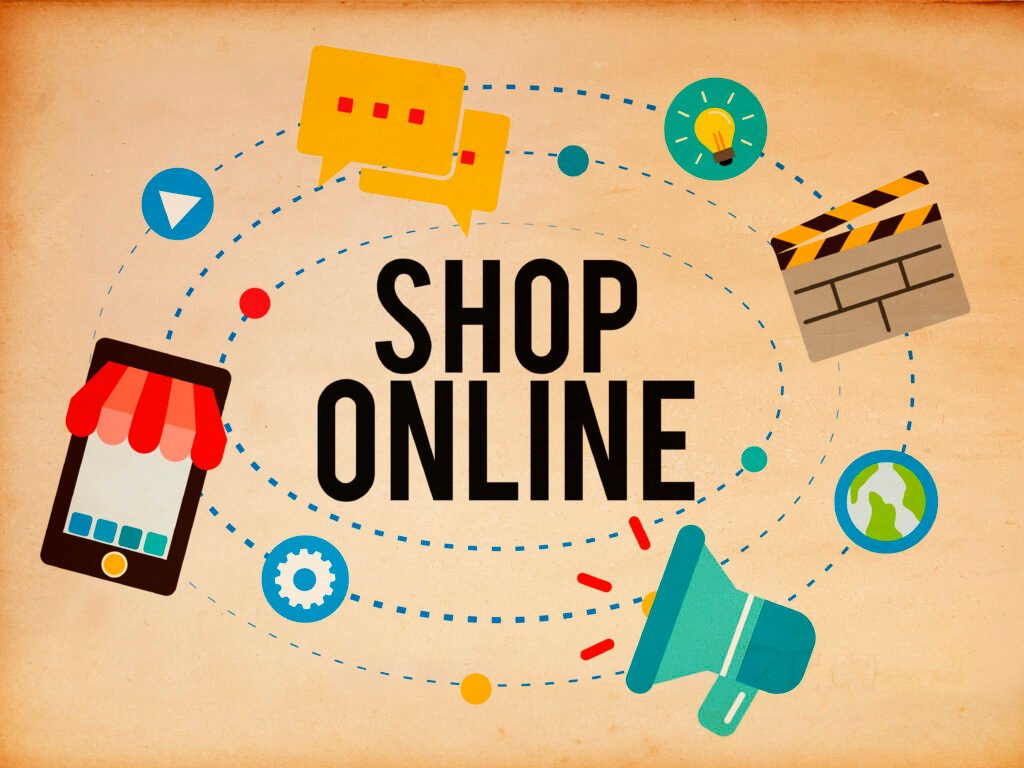Table of Contents
In today’s digital age, finding trending products is essential for success in the online marketplace. Whether you are an entrepreneur looking to start an e-commerce business or a digital marketer seeking to promote the latest products, staying ahead of the trends is crucial. In this blog post, we will explore some effective strategies to help you find trending digital products.
1. Social Media Listening: Trending Digital Products
In our interconnected digital universe, social media platforms are bustling hubs of conversations, emotions, and trends. Social media listening, also known as social media monitoring, is the art of eavesdropping on these virtual dialogues. But fear not; it’s all ethical and for a good cause! Imagine sitting in a cozy café, sipping your favorite latte, and discreetly observing the vibrant lives unfolding around you. That’s precisely what social media listening feels like—minus the caffeine.

What is Social Listening?
- Social listening, also known as social media listening, involves analyzing online conversations related to your brand and industry. It’s like eavesdropping on digital discussions to gain insights about your audience. Here’s how it works:
Monitoring Conversations: Social listening entails keeping an ear to the ground across various social media channels. You pay attention to instances when your audience mentions your brand or provides feedback.
Understanding Audience Sentiment: By tracking these conversations, you gain valuable insights into how people perceive your products or services. You discover their pain points, preferences, and expectations.
Beyond Brand Mentions: Social listening isn’t limited to your brand alone. You can also track competing brands, trending content, and sentiment analysis related to your industry. This broader perspective helps you make informed decisions.
Why is Social Listening Important?
Customer Insights: Social listening provides a direct line to your customers’ thoughts and feelings. You learn what excites them, what frustrates them, and what they truly care about.
Opportunity Discovery: By monitoring trends and discussions, you uncover opportunities. Perhaps there’s an unmet need in the market that your brand can address.
Enhanced Customer Service: When you promptly respond to customer feedback (both positive and negative), you improve your brand’s reputation and build stronger relationship
Competitor Analysis: Social listening allows you to peek into your competitors’ strategies. What are they doing well? Where are their weaknesses?
Data-Driven Decision Making: Armed with real-time data, you can make smarter business decisions. Whether it’s refining your marketing campaigns or developing new products, social listening guides your choices.
How to Implement Social Listening: Expert Tips
Choose the Right Tools: There are several social listening tools available. Consider options like Hootsuite, Brandwatch, or Mention. These tools help you track conversations efficiently.
Define Your Goals: What do you want to achieve with social listening? Set clear objectives—whether it’s improving customer satisfaction, identifying influencers, or staying ahead of trends.
Create Search Queries: Set up specific search queries related to your brand, industry, and competitors. These queries will help you filter relevant conversations.
Analyze Sentiment: Look beyond mere mentions. Understand the sentiment behind each mention—whether it’s positive, negative, or neutral.
Engage Authentically: When you respond to comments or messages, be genuine. Show empathy, address concerns, and celebrate wins.
Remember, social listening isn’t just about data—it’s about connecting with your audience on a human level. So, put on your digital detective hat and start listening! 🕵️♀️👂
👂
The Human Touch
- Let’s infuse some humanity into this topic. Imagine you’re at a lively party. People chatter, laugh, and share stories. You, my friend, are the attentive listener—the one who leans in, nods, and catches every nuance. Social media listening is akin to that role. You’re not just scanning posts; you’re deciphering emotions, detecting trends, and understanding the collective heartbeat of the digital crowd.
How Does It Work?
- Setting Up Your Listening Station:
- Choose your tools. Sprout Social, Hootsuite, and Brandwatch are like your digital binoculars.
- Define your keywords—the magic words that unlock conversations. Think of them as secret passcodes.
- Scanning the Social Landscape:
- Twitter, Facebook, Instagram, LinkedIn—the party venues.
- Monitor hashtags, mentions, and comments. These are your partygoers’ whispers.
- Listening with Empathy:
- Remember, you’re not a robot. Feel the pulse of the discussions.
- Detect sentiments: Is it joy, frustration, or plain old sarcasm?
- Spotting Trends and Insights:
- Ah, the gems! Trends emerge like dance moves catching fire.
- Identify what’s hot, what’s fading, and what’s about to explode.
Why Bother?
- Customer Insights:
Imagine overhearing your customers’ candid opinions.
Social media listening reveals pain points, desires, and unmet needs. - Competitor Intel:
Peek over the fence. What are your rivals up to?
Learn from their hits and misses.
- Crisis Management:
When the digital storm brews, you’ll be the first to know.
Swift action prevents PR disasters.
The Art of Responding
- Engage Thoughtfully:
- When someone shares their heart, don’t reply with an emoji.
- Craft genuine responses. Be the friend who listens and cares.
- Join Conversations:
- Slide into discussions (virtually, of course).
- Share insights, offer solutions, and sprinkle kindness.
Social media listening isn’t just about data—it’s about empathy, curiosity, and connection. So, grab your digital cuppa, put on your invisible headphones, and listen. The virtual party awaits, and you’re the life of it!
2. Google Trends

Google Trends is a powerful tool that allows you to explore the popularity of specific keywords over time. By analyzing search trends, you can identify rising trends and find digital products that align with those trends. Simply enter relevant keywords related to your niche and explore the search volume over a specific period. Look for consistent upward trends or sudden spikes in interest to discover potential trending products.
- Explore Trends: Google Trends allows you to explore real-time search interest and discover what topics are trending right now. Whether it’s breaking news, cultural phenomena, or global events, you can see what’s capturing people’s attention.
- Year in Search: Take a journey through the past year using Google Trends data. It’s like flipping through a digital scrapbook of significant moments, events, and search trends. For instance, in 2023, we can explore how the world searched during that year[1].
- Earth Day 2024: On April 22, Earth Day is celebrated globally to raise awareness about environmental issues. Google Trends lets us see how people engaged with Earth Day-related topics and supported our planet’s protection[1].
- Visualizing Dreams: Ever wondered what others are searching for when it comes to dream interpretations? Google Trends visually explores dream-related queries, revealing the mysteries of our subconscious minds[2].
- Daily Insights: For a more immediate perspective, check out today’s trends. It’s like peeking into the collective curiosity of people around the world on any given day. You’ll get a sense of search volume and discover what’s currently buzzing[3].
3. Online Marketplaces : Trending Digital Products

Online marketplaces such as Amazon, eBay, and Etsy can provide valuable insights into trending digital products. Explore the bestseller lists, customer reviews, and product rankings in your niche. Pay attention to products with a high number of sales and positive reviews. This indicates that the product is in demand and popular among consumers.
What Is an Online Marketplace?
An online marketplace is like a bustling digital bazaar where buyers and sellers come together to exchange goods and services. Think of it as a virtual shopping mall where various vendors set up their stalls. Here are the key points:
Intermediaries: Online marketplaces act as intermediaries, connecting buyers and sellers. They provide a platform for transactions to take place.Diverse Offerings: These platforms host a wide range of products and services. From handmade crafts to electronics, you’ll find it all.
Examples: Let’s peek into some popular online marketplaces:
Amazon: The giant of e-commerce, Amazon offers everything from books to gadgets to groceries. It’s like a digital megastore where you can find almost anything12.eBay: Known for auctions and secondhand items, eBay allows individuals and businesses to sell both new and used products.
Etsy: If you’re into unique, handmade, or vintage items, Etsy is your go-to. It’s a treasure trove of creativity.
AliExpress: A global marketplace where you can discover affordable products directly from manufacturers in China.
Walmart: Walmart’s online marketplace complements its physical stores, offering a vast selection of products.
Flipkart: A major player in India, Flipkart covers everything from fashion to electronics.
Snapdeal: Another Indian platform, Snapdeal caters to diverse consumer needs.
IndiaMart: A B2B marketplace connecting businesses across India.
Shopclues: Known for budget-friendly deals and a variety of products
Pepperfry: Specializes in furniture and home decor.
Benefits of Online Marketplaces
Visibility: Listing your products on established marketplaces instantly exposes them to a large audience. You ride on their existing traffic.
Trust: Buyers trust well-known platforms. They feel secure making purchases there.
Lower Entry Barrier: Starting your own online store requires effort and marketing. Marketplaces offer a shortcut.
Payment Processing: Most platforms handle payment processing, saving you the hassle.
SEO Boost: Marketplaces often rank high in search engines, benefiting your product visibility.
Should You Start Your Own Store or Use Marketplaces?
Both options have pros and cons:
Building Your Own Store:
- Pros: Full control, no commissions, brand ownership.
- Cons: Marketing effort, slower start, building a brand takes time.
Using Marketplaces:
- Pros: Instant visibility, established trust, lower entry barrier.
- Cons: Commissions, competition, limited customization.
4. Industry News and Blogs
Stay up to date with the latest industry news and blogs to discover emerging trends and digital products. Many industry experts and influencers often share their insights and predictions on upcoming trends. Subscribe to relevant newsletters, follow industry-specific blogs, and join forums to stay informed about the latest happenings in your niche.
1. Economic Times Business News
The Economic Times provides a wealth of information on various industries. Here are some recent highlights:
Large Residential Developers: The growth momentum remains strong for large residential developers. They’ve doubled their market share, and inventory management and real estate prices are improving. Factors like per capita incomes and expected interest rate cuts play a significant role.
indian Oil Corp (IOC): IOC plans to invest a whopping ₹5,215 crore to develop 1 GW of renewable energy capacity in India. This includes standalone solar, wind, or hybrid projects. The move toward clean energy is commendable
Sterlite Power: Sterlite Power has bagged projects worth ₹2,500 crore in Q4. Their contributions to the power sector are noteworthy11
Jet Airways Founder Naresh Goyal: In a money laundering case, Naresh Goyal, the founder of Jet Airways, has moved the High Court seeking bail on medical grounds11.
NFRA Penalty: The National Financial Reporting Authority (NFRA) has penalized three auditors in the Reliance Home Finance case. Financial transparency matters11.
GMR Airports Infra: GMR Airports Infra is set to buy a stake in WAISL for ₹57 crore. The aviation sector continues to evolve11.DGCA Action: The Directorate General of Civil Aviation (DGCA) has suspended a senior Vistara official for pilot training lapses. Safety remains a top priority1
Adani vs. Birla: As Adani Group tries to build a challenge, Birla Group cements its leadership with UltraTech. The corporate landscape is always intriguing11.
2. IndustryWired
- IndustryWired is a treasure trove of global stories, industry trends, and technological insights. Whether you’re curious about AI advancements, sustainability practices, or disruptive innovations, this platform has you covered22.
3. Industrial Manufacturing Blogs
If you’re passionate about manufacturing and industrial processes, check out these top blogs:
- Feedspot’s List: Feedspot curates a list of the 70 best industrial manufacturing blogs. These blogs cover topics like automation, supply chain management, and cutting-edge technologies33.
4. Times Now Business Industry News
- Times Now offers a comprehensive view of Indian industry news. From manufacturing and IT to banking and automotive sectors, you’ll find the latest headlines, reports, and analyses here44.
5. Business Today Industry Sector News
- Business Today keeps you updated on Indian industry sectors. Whether it’s the NIFTY 50, Sensex, or Dow Jones, you’ll find relevant news and trends. Plus, discover budget-friendly refrigerators with innovative features—all under ₹10,00055.
Remember, staying informed is like having a backstage pass to the ever-evolving world of industries. Happy reading! 📰🌟
5. Keyword Research
Performing keyword research can help you identify trending digital products indirectly. Use keyword research tools like Google Keyword Planner or SEMrush to find popular keywords related to your niche. Look for keywords with high search volume and low competition. This indicates that people are actively searching for products related to those keywords, which may indicate a trending product.
6. Customer Feedback and Reviews

Customer feedback and reviews can provide valuable insights into the popularity of digital products. Explore customer reviews on e-commerce platforms, social media, and review websites to gauge the satisfaction levels of consumers. Look for products with positive reviews and high ratings, as these are likely to be trending products.
7. Influencer Collaboration

Collaborating with influencers in your niche can be a great way to discover and promote trending digital products. Influencers often have their finger on the pulse of the latest trends and can provide recommendations based on their expertise. Reach out to relevant influencers and offer them mutually beneficial collaborations, such as product reviews or sponsored posts.
By utilizing these strategies, you can stay ahead of the curve and find trending digital products that have the potential to drive sales and success in the online marketplace. Remember to continuously monitor trends and adapt your product selection accordingly to ensure continued growth and profitability.

